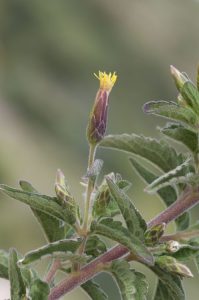How to Propagate Brickellia venosa

Propagating Brickellia venosa: A Gardener’s Guide to the Veined Brickellia
Brickellia venosa, commonly known as veined brickellia, is a captivating native shrub prized for its delicate, fragrant foliage and attractive, albeit small, flowers. Its arching branches and drought-tolerant nature make it a popular choice for xeriscaping and wildlife gardens, attracting pollinators with its nectar-rich blooms. However, its relative rarity in cultivation compared to other shrubbery makes propagation particularly rewarding for the dedicated gardener. This article will explore various methods for propagating Brickellia venosa, offering practical advice and insights into the challenges and rewards associated with each.
Seed Germination:
Currently, there are no known reliable methods for seed germination propagation of Brickellia venosa. While the plant produces seeds, germination rates are reportedly extremely low, even under optimal conditions. Further research is needed to determine if specific pre-treatments, such as scarification or stratification, might improve germination success. Therefore, relying on seed germination for propagating this species is not recommended for the average gardener.
Cuttings:
Cuttings offer a more promising approach to propagating Brickellia venosa.
Challenges: Success with cuttings depends heavily on timing and technique. Hardwood cuttings taken in late winter or early spring generally yield better results than softwood cuttings. The semi-woody nature of the stems can make rooting somewhat challenging.
Tips: Take 4-6 inch long cuttings from semi-hardwood growth, removing lower leaves to prevent rot. Dip the cut ends in rooting hormone before planting them in a well-draining potting mix (e.g., a mix of perlite and peat moss). Maintain high humidity using a humidity dome or plastic bag, and provide bottom heat to encourage root development. Consistent moisture is crucial but avoid overwatering.
Rewards: Cuttings provide a relatively quick and reliable method of producing clones of the parent plant, ensuring that desirable traits are preserved.
Division:
Division is a viable method for propagating Brickellia venosa, particularly for established plants.
Challenges: Division should be attempted only on mature, well-established plants with a robust root system. Care must be taken to avoid damaging the roots during the process, as this can hamper the survival of divisions.
Tips: Carefully dig up the entire plant, gently separating it into smaller divisions ensuring each division has sufficient roots and foliage. Replant the divisions immediately in well-drained soil, watering thoroughly but avoiding waterlogging.
Rewards: Division provides a simple way to increase the number of plants without specialized equipment or techniques.
Tissue Culture:
Tissue culture propagation of Brickellia venosa is a possibility but is typically reserved for commercial nurseries or research settings due to the specialized equipment and expertise required.
Challenges: Establishing sterile conditions and developing appropriate culture media are critical for successful tissue culture. This method involves significant investment in equipment and training.
Tips: This method is not recommended for home gardeners due to the complexity and required resources.
Rewards: This method offers the potential for mass propagation of genetically uniform plants, and the potential to eliminate diseases and pests.
Conclusion:
Propagating Brickellia venosa presents unique challenges, largely due to the plant’s relative lack of documented propagation techniques. While seed germination proves unreliable, cuttings and division offer practical and relatively successful methods for the dedicated gardener. Tissue culture remains an option for large-scale propagation, though it requires specialized knowledge and resources. The satisfaction of successfully cultivating this beautiful and uncommon shrub is deeply rewarding, a testament to patience and perseverance. Don’t be discouraged by initial setbacks. With patience, attention to detail, and the right techniques, you can enjoy the beauty of Brickellia venosa in your garden, sharing its unique charm with others.